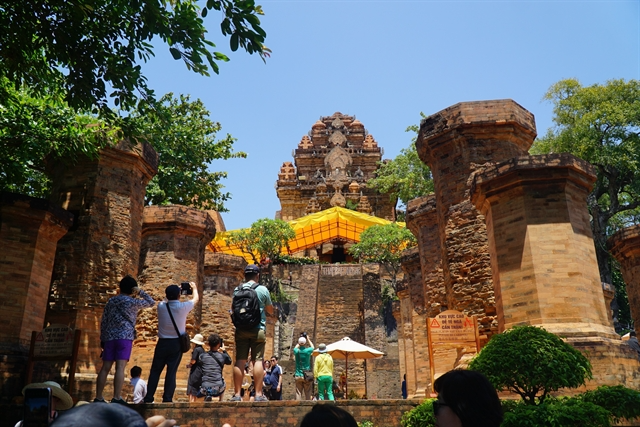 Life & Style
Life & Style


|
| Ponagar Temple in Khánh Hòa Province’s Nha Trang City is among the list of five new special national monuments. VNA/VNS Photo Đặng Tuấn |
HCM CITY – Five historical sites were recognised as Việt Nam’s special national relics, the Ministry of Culture, Sports and Tourism announced on Sunday.
They include Ponagar Temple in Nha Trang City, the Bối Khê Pagoda in Hà Nội, the Xám Temple in Nam Định Province, and the relic complex of the Mạc dynasty and the relic complex of Từ Lương Xâm in Hải Phòng City.
Ponagar, a must-visit place in Nha Trang, is a complex of brick temples built by the Chăm people from the 8th to 13th centuries.
It continues to be a place of worship for Yang Ino Pon Nagar, the goddess of the Liu clan, which ruled over the southern part of the Chăm kingdom.
The original structure consisted of seven or eight towers, but only four remain.
It was listed as a national relic in 1979.
Lê Văn Hoa, deputy director of the Khánh Hòa Department of Culture and Sports, said the recognition should help preserve and restore the site, promote Chăm culture and attract tourists.
The Bối Khê Pagoda, which is over 600 years old, is one of the oldest in the north of the country.
It is dedicated to Buddha, Tam Tòa Thánh Mẫu (The Three Holy Mothers) and Đức Thánh Bối Nguyễn Đình An, a revered figure credited with repelling invaders from China.
It also preserves religious imprints from the Trúc Lâm Zen sect, Taoism and Confucianism, and numerous architectural and artistic features of various timelines, making it a witness to history.
The Xám Temple worships Trần Lãm, one of the strongest warlords during the country’s Anarchy of the 12 Warlords from 965-968.
The structure is made entirely of ironwood and roofed with traditional Vietnamese tiles, and features unique architectural details and diverse ornamental patterns.
It was recognised as a national relic in 1964.
The relic site of the Mạc dynasty in Hải Phòng’s Kiến Thụy District is a 10.5 ha historical and archaeological complex that was the first coastal capital of the regime.
It worships the kings of the dynasty and preserves invaluable antiques.
The relic complex of Từ Lương Xâm in Hải An District is dedicated to Ngô Quyền, a warlord and the founder of the Ngô dynasty.
It used to be Ngô Quyền’s military base during the battle against the Southern Hán Dynasty in the Bạch Đằng River in 938. – VNS